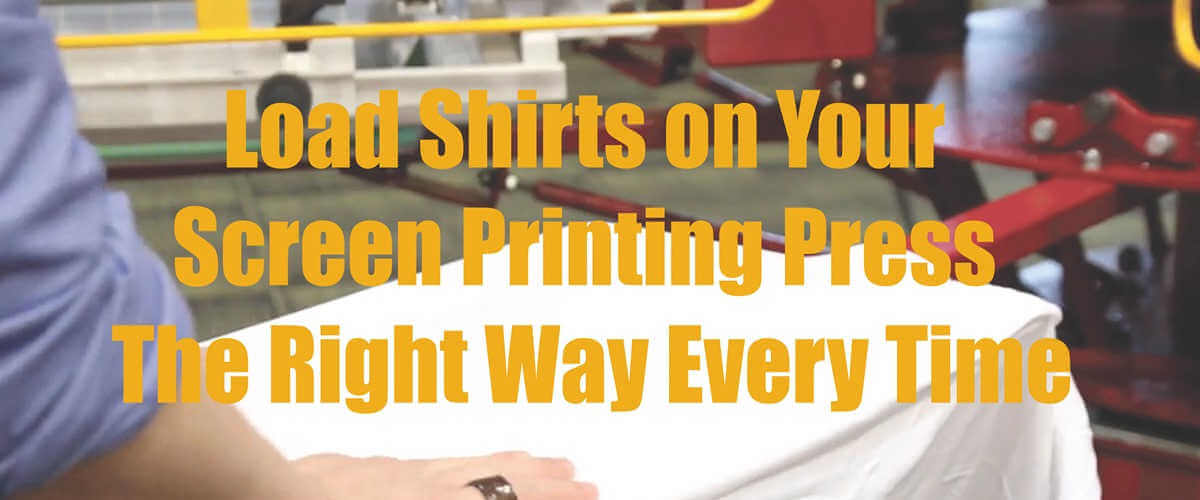

Revolutionizing the screen printing industry through cutting-edge technology and quality service
Anatol Equipment Manufacturing Co.
1429 S Shields Dr
Waukegan, IL 60085


Revolutionizing the screen printing industry through cutting-edge technology and quality service
Anatol Equipment Manufacturing Co.
1429 S Shields Dr
Waukegan, IL 60085

Methods for loading shirts on pallets vary from printer to printer, with printers finding their own tricks and techniques the more they print. However, there are some basic elements most printers employ to load shirts, and mastering these basics can help you load shirts on your screen printing press the right way every time.
Many printers will mark their pallets to help them align garments during loading. Most commonly, printers will make a center line down the pallet, and some will place marks at regular intervals to help judge the height of a print on the garment. Others will use a piece of masking tape to make a mark for each job to align the shirt collar for proper print placement.
Having your shirts at the ready will help with quick and easy loading. Some printers will place their stacked t-shirts front side up on a cart in line with the pallet so the shirts can be pulled directly onto the pallet. Other printers prefer to place stacked shirts facedown at a 90-degree angle to the pallet, flipping the shirts as they are placed on the press.
When you’re ready to load your shirts, slide your hands into the bottom hem. Pull the shirt hem taut by pushing one hand into each side seam (or where the side seams would be). If you’ve placed your shirts facedown, remember you will have to flip them as you move toward the press.
As you rock forward, pull the shirt down over the pallet. If you’re running an automatic press with a foot pedal, your forward motion should plant your foot on the pedal to stop the machine while you load. Pull the shirt hem down over the pallet until the shoulder seams sit on the top edges of the pallet and the shirt is taught over the pallet surface.
As you step backward, pull the shirt back by the shoulder seams until the portion of the shirt you’re looking to print on is on the center of the pallet. At this point, you can check to make sure the shirt is centered, with the same distance between the arm seams and the pallet on both sides.
After you’ve stepped back and straightened your shirt, you can cycle the next pallet to you, using the foot pedal if you have one. At the same time, grab the next shirt on your stack and get ready to load the new pallet.
The more your print, the more natural the press-loading process will become. You’ll get faster at loading your screen printing press and at making sure you’re getting the shirt straight and in the proper place for your prints. You’ll also likely develop your own tricks and techniques to make it faster and easier for you to load shirts on your screen printing press the right way every time.
Looking for more tips on how to speed up your screen printing production? Check out these blog posts:
Tips for Planning the Perfect Screen Printing Shop Layout
How to Keep Up with Your Screen Printing Shop’s Customer Demand
Your message was successfully sent!